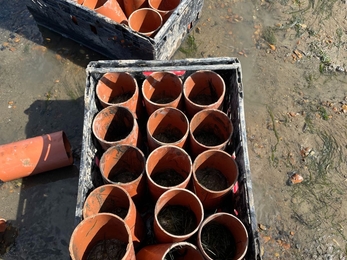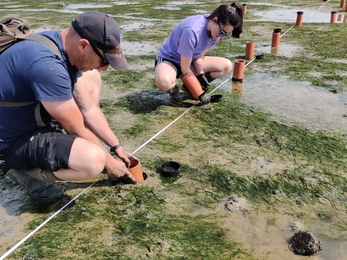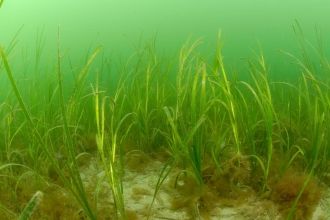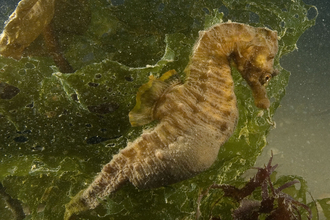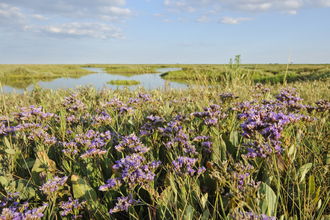What is seagrass?
Seagrasses are the only flowering plants able to live in seawater and pollinate while submerged. They are found in shallow waters and often grow in large groups giving the appearance of terrestrial grassland – a lush underwater meadow. In Essex, we have two types of seagrass: common eelgrass and dwarf eelgrass.
Why is seagrass important?
Healthy seagrass meadows support marine life. From nursery sites for fish, to providing food and shelter for marine mammals, tiny insects and waterfowl, they are essential to biodiverse ecosystems. They keep seas clean by absorbing nutrients and are climate superheroes, absorbing carbon from the atmosphere.
Did you know, one hectare of seagrass may store two tonnes of carbon dioxide (CO2) a year and hold it for centuries?
Where is Essex's seagrass?
The map below shows where current seagrass locations area, and where they used to be. Studies have shown that meadows in the Stour and Orwell estuaries are at just 2% of their 1973 extent. In the UK, we have lost half of our seagrass meadows since 1985.
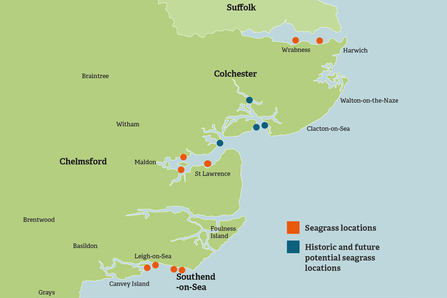
Essex Seagrass Project survey locations
Reasons for seagrass decline
There are many factors that have led to the decline of seagrass: from physical pressures such as anchoring, mooring, bait digging and trampling; to eutrophication (excessive nutrients in the water system leading to algal blooms), pollution and climate change. They were also severely affected by a disease in the 1930s.
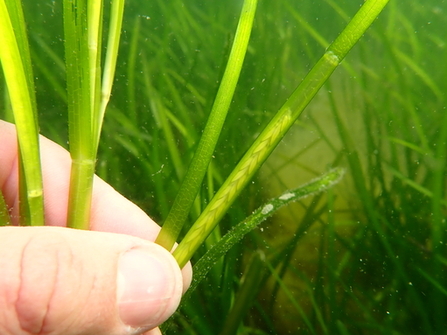
We're restoring seagrass across Essex
Between 2021 – 24, we delivered the ReMEDIES project alongside Natural England to learn about the pressures facing our seagrass. These include recreational boaters, water sport users and walkers. We have been raising awareness with coastal communities, key stakeholders and water users to reduce these pressures.
View a map of our recreational impact survey results
We’re now working with Project Seagrass to restore seagrass populations. This includes conducting extensive surveys on our existing seagrass to learn about its properties and characteristics, as well as trialling restoration techniques such as transplants with a view to expanding this at various sites along Essex’s coast. These trials consider environmental conditions, sediment type, gradient, density of transplants and other factors to help define the best methods required for seagrass restoration.
Visit the Project Seagrass website Visit the ReMEDIES website
LIFE Recreation ReMEDIES (LIFE18 NAT/UK/000039) is financially supported by LIFE, a financial instrument of the European Commission. In the Thames and Stour estuaries, the Essex Seagrass Project is kindly supported by The AIM Foundation.

